By Gina Roos, editor-in-chief
Designing for automotive applications is getting more challenging with new technologies and features that are driving up the number — and types — of sensors used in vehicles today. Two of the newest, and perhaps the biggest, drivers are autonomous driving and safety systems.
Vehicles are packed with a range of sensors that measure things like pressure, temperature, position, speed, humidity, and occupation, along with a growing number of sensors for advanced driver-assistance systems (ADAS) and cameras. Here is a selection of 10 sensors (not in any particular order) for a variety of automotive applications that can help point you in the right direction for your next design.
1. OmniVision OV9284 global shutter image sensor
Hitting the mark for in-cabin monitoring adoption, the OV9284 1-megapixel global shutter image sensor from OmniVision Technologies Inc. delivers a small size, low power consumption, and excellent near-infrared (NIR) quantum efficiency (QE). Aimed at new safety regulations for Level 3 semi-autonomous vehicles, in which driver state monitoring (DSM) is used to track the driver’s eye gaze, OmniVision claims that the OV9284 offers the industry’s best NIR quantum efficiency in a driver-monitoring image sensor — 12% at 940 nm.
In addition, power consumption is 90 mW at 60 frames per second (fps), which is touted as 30% lower than the nearest competitor. The global shutter sensor with OmniPixel 3-GS technology offers 1,280 × 800 resolution at video speeds of up to 120 fps and is housed in a 5,237 × 4,463-µm chip-scale package.
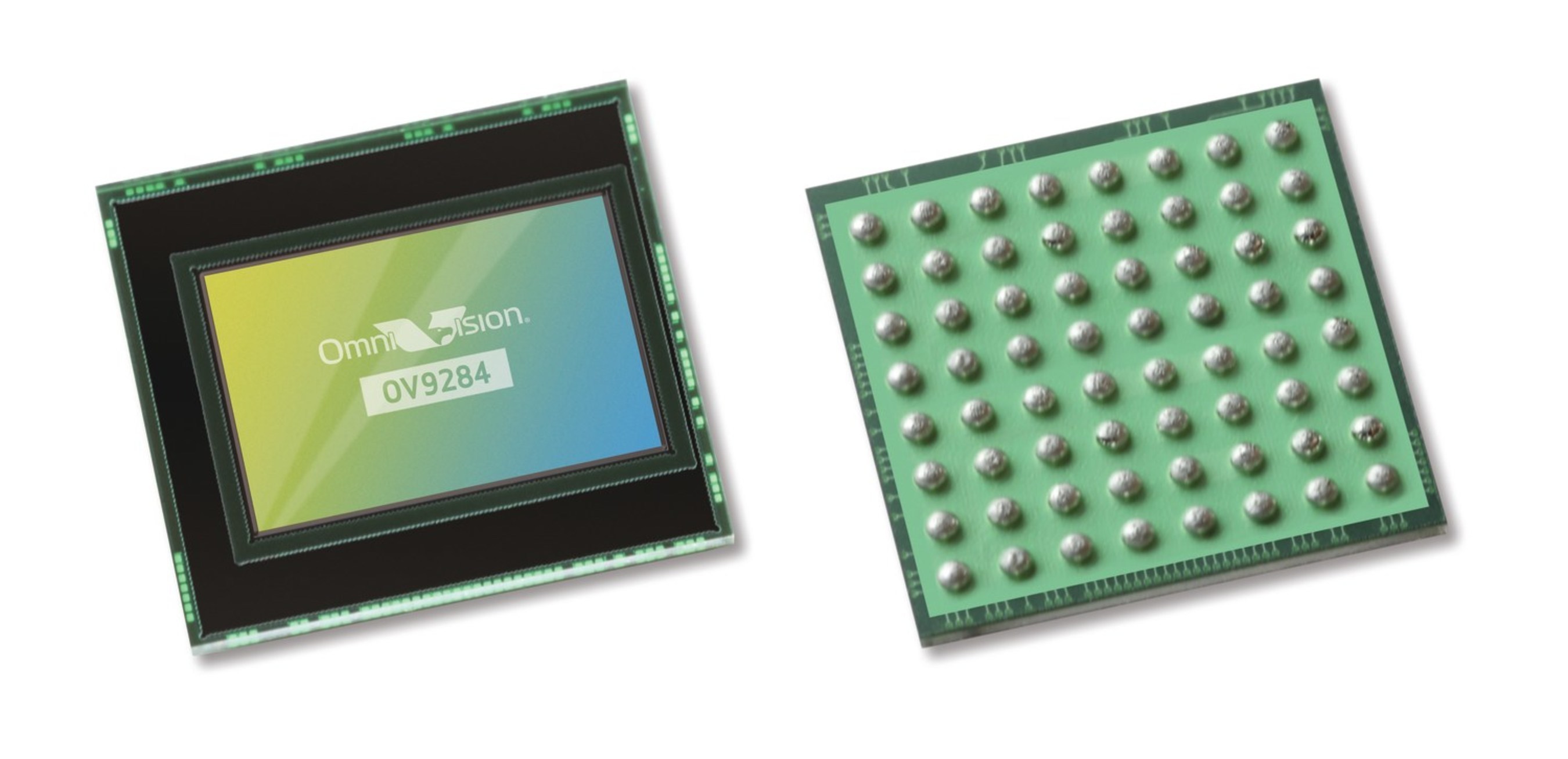
OmniVision’s OV9284 delivers a small size, low power consumption, and excellent NIR QE for driver state monitoring applications.
2. TDK IAM-20680 and IAM-20680HP IMUs
TDK Corp., through its InvenSense subsidiary, rolled out a new line of automotive high-accuracy MEMS motion sensors. The “MotionTracking” automotive-qualified IAM-20680 and IAM-20680HP six-axis inertial measurement units (IMUs) can help improve the absolute position of a vehicle in GNSS- and GPS-poor environments, such as tunnels, parking garages, and urban canyons. These MEMS sensors can be used to improve the estimate of the position, direction, and speed of a vehicle when the satellite signal is poor or non-existent as well as improve the quality of the position estimation when the satellite signal is strong, said TDK.
Touted as the smallest six-axis automotive-qualified sensor (combining a three-axis gyroscope and a three-axis accelerometer), the IAM-20680 is claimed as the industry’s only device featuring 16-bit accelerometers and 16-bit gyroscopes in a series-production car today. The operating temperature range is –40°C to 85°C. If you’re looking for a beefier and higher-temperature-range IMU, the IAM-20680HP, a high-performance version of the IAM-20680, offers an extended operating temperature range of –40°C to 105°C and high gyroscope and offset thermal stability. It is pin-, package-, and register-compatible with the IAM-20680.
In addition, the IAM-20680 and IAM-20680HP are designed into the new InvenSense Coursa Drive software solution, inertial-aided positioning software for autonomous vehicle (AV) platform developers. The Coursa Drive is a high-performance extension of the InvenSense Positioning Library (IPL); it improves inertial-only vehicle positioning to
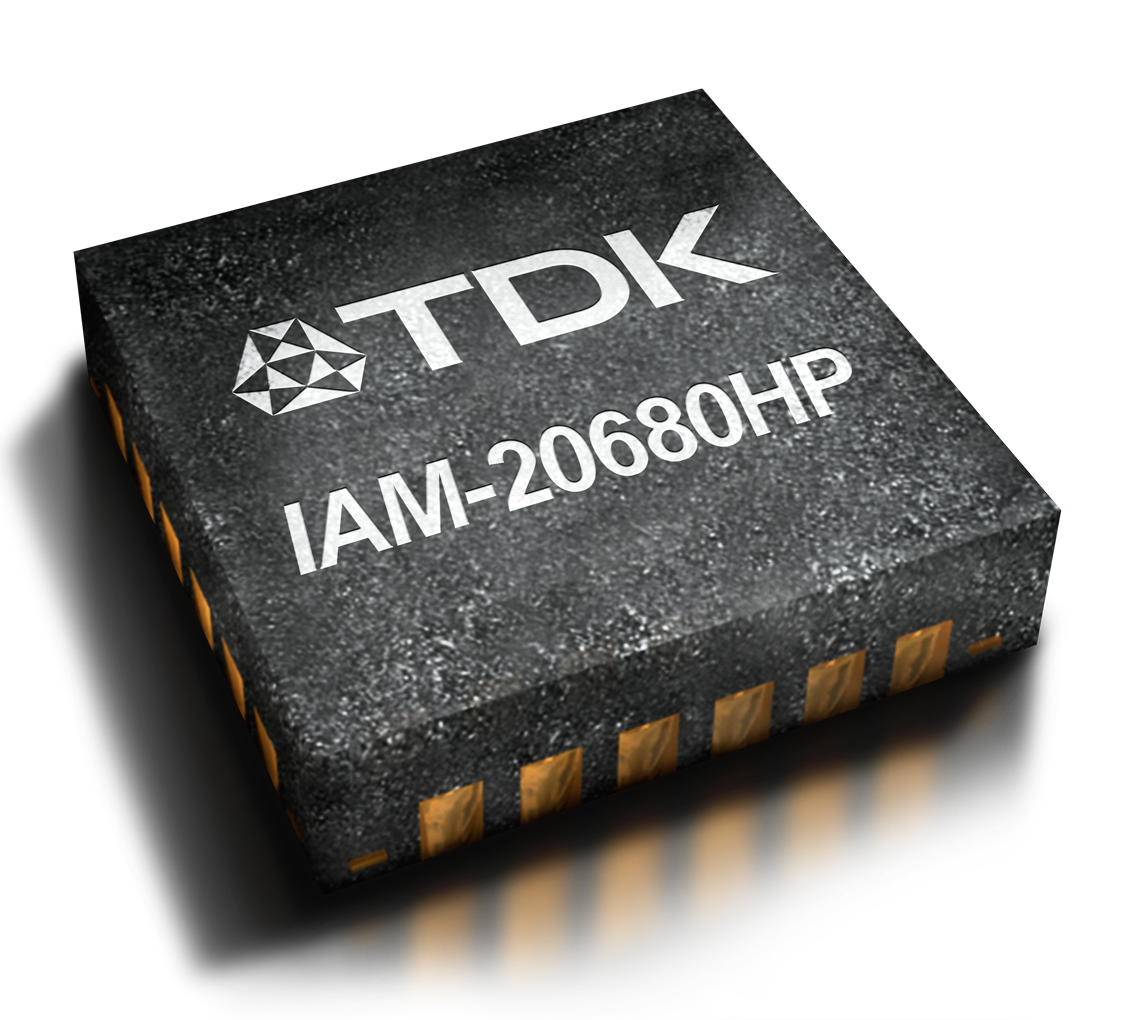
TDK’s six-axis IAM-20680HP and IAM-20680 offer excellent temperature stability that enables navigational driving through challenging environments and low sensitivity error that keeps the car turning correctly.
3. Vishay VCNL4030X01 optical sensor
The Vishay Semiconductors VCNL4030X01 combines photo detectors for proximity and ambient light, a signal conditioning IC, a 16-bit ADC, and a high-power IRED in a small 4 × 2.36 × 0.75-mm surface-mount package, saving board space and increasing design flexibility in multi-sensor applications. The AEC-Q101–qualified proximity and ambient light sensor is versatile and can be used in a host of applications including mobile devices, smart homes, industrial, and automotive.
Using the company’s Filtron technology, it allows ambient light spectral sensitivity close to that of the human eye while offering excellent background light cancellation capabilities, said Vishay. In addition, the sensor offers a programmable interrupt function that can set both high and low thresholds to reduce overall power consumption.
The VCNL4030X01’s built-in ambient light photodiode offers detection from 0.004 lx to 4.2 klx, which allows the device to operate in dark or high-transparency lens designs. The VCNL4030X01’s proximity sensor uses intelligent cancellation to eliminate crosstalk, and a smart persistence scheme offers a fast response time and accuracy when an object is detected. The device can detect objects at distances up to 300 mm.
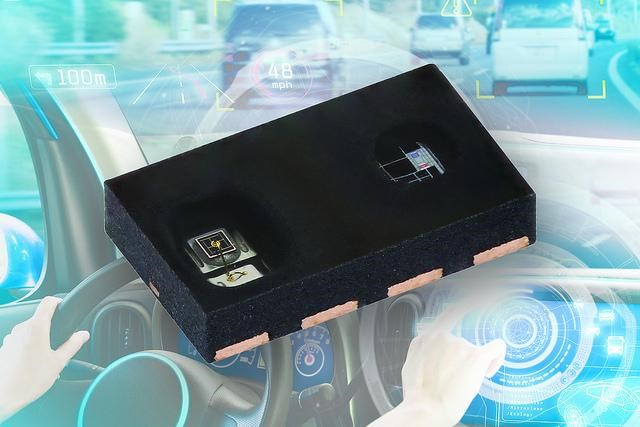
The Vishay Semiconductors VCNL4030X01 combines photo detectors for proximity and ambient light, a signal conditioning IC, a 16-bit ADC, and a high-power IRED in a small surface-mount package.
4. STMicroelectronics VG5661 and VG5761 global shutter image sensors
Two other sensors aimed at automotive safety systems are ST’s VG5661 and VG5761 global shutter image sensors for driver-monitoring systems. They capture scenes as illuminated from the camera, eliminating external effects such as sunlight or street lighting to enhance vehicle occupant monitoring and improve driver-monitoring systems, particularly under near-infrared illumination close to 940 nm. The sensors can also be used in new feature applications such as assessing driver attention, passenger comfort, or child behavior.
The VG5661 and VG5761 are 1.6-megapixel and 2.3-megapixel automotive sensors. ST’s automotive global shutter pixel is designed with two memory cells and a small pixel size of 3.2 μm, offering both a small size and higher resolution for sharper images, even in challenging conditions. The two memory zones deliver double-image storage for a linear high dynamic range up to 98 dB or background removal without lag effects. It also eliminates the need for additional processing by the host system. A high dynamic range and high modulation transfer function at near-infrared wavelengths minimizes interference from natural light sources. The sensors are qualified to AEC-Q100 grade 2 and include safety-integrity features required for an ASIL-B camera system under the automotive safety standard ISO 26262.
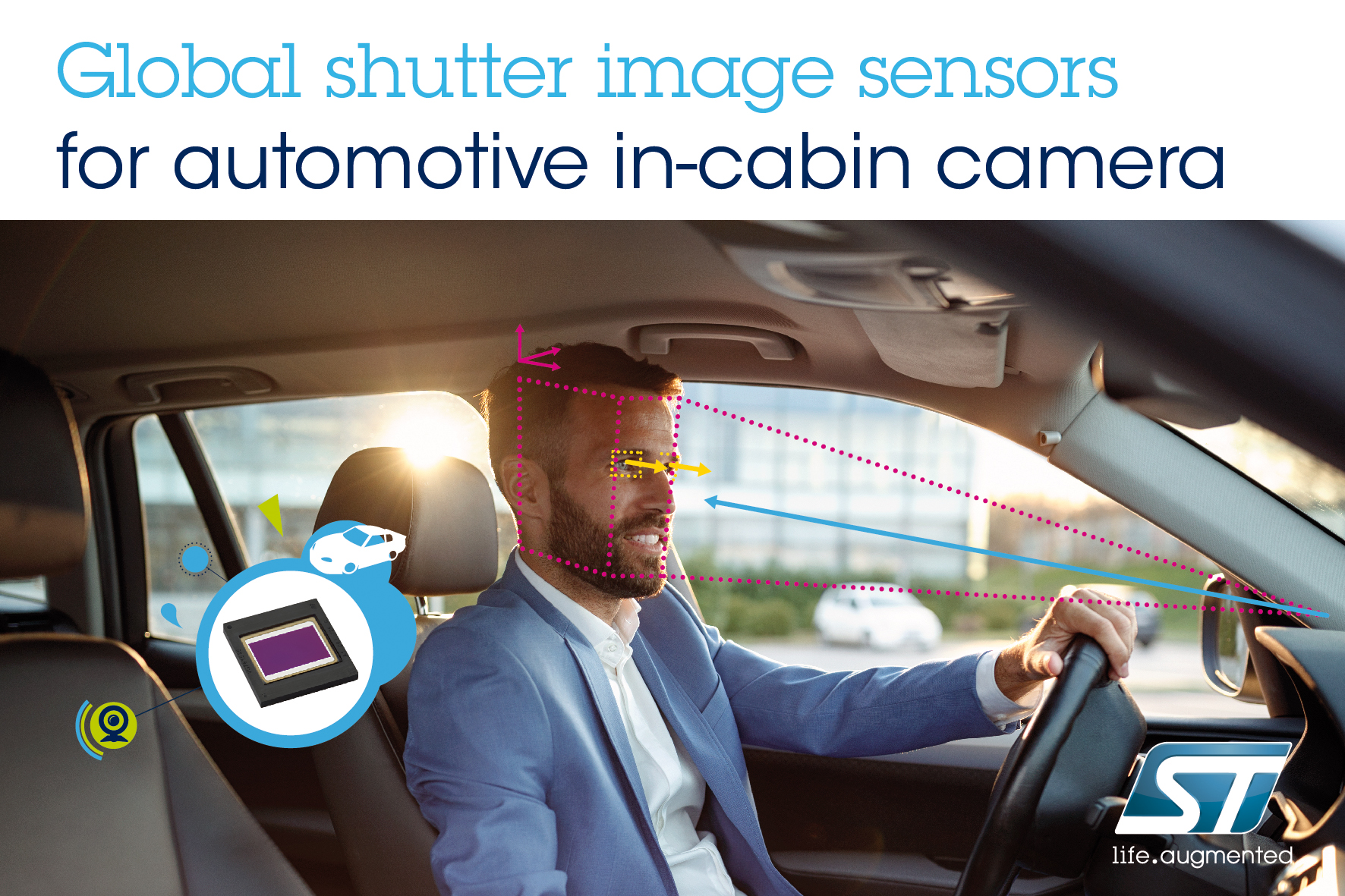
STMicroelectronics’ VG5661 and VG5761 are available in standard BGA packages or as bare die for direct integration in automotive OEM systems.
5. ams AS5200L position sensor
Suited for safety-critical automotive applications that call for high accuracy, redundancy, and a small footprint, the ams dual-die AS5200L magnetic rotary position sensor with an I2 C interface is AEC-Q100 grade 1-qualified. Target applications include electrified powertrain drive-by-wire control functions, such as shift-by-wire for both traditional stick and rotary shifters and pedal applications.
The AS5200L touts inherent immunity to stray magnetic fields and, thus, delivers highly accurate and repeatable measurements in noisy magnetic environments. The dies are in a stacked configuration, which means that they can be paired with a single small target magnet while providing identical measurement outputs from each die. Separate package pins for each die prevent an electrical fault in the device from affecting both dies.
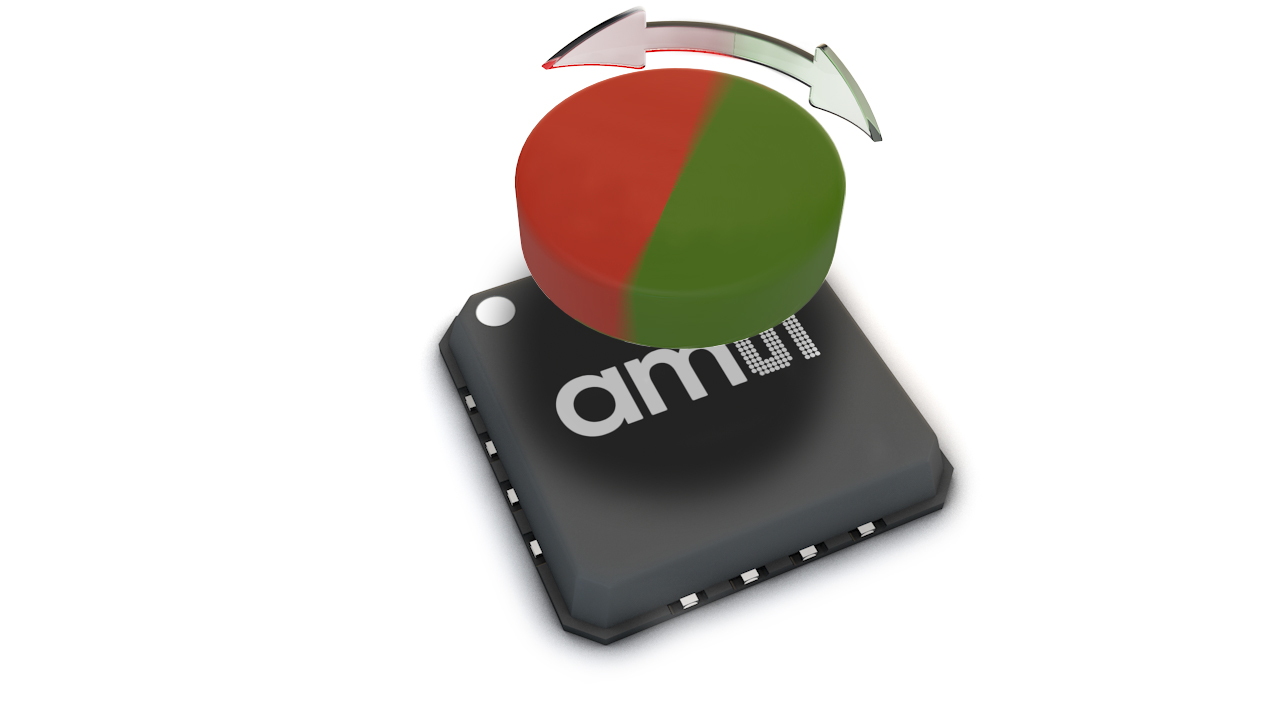
The ams automotive-grade sensor, housed in a MLF-16 package, is designed for shifter position detection in hybrid, battery-powered, and conventional vehicles.
6. Texas Instruments AWR1642 sensor
Although introduced over a year ago, the automotive mmWave sensors from Texas Instruments are still worthy of mention for ADAS applications that include long-, short- and medium-range radar. The automotive-qualified and highly integrated, ultra-wideband AWR1642 mmWave sensors can also be used to detect free space and obstacles near doors and trunks, occupancy detection inside the cabin, intruder alert, and smarter automated parking.
Operating over the 76- to 81-GHz band, the single-chip solution FMCW radar sensor includes the DSP subsystem, which contains TI’s C674x DSP for radar signal processing and an Arm R4F-based processor subsystem for radio configuration, control, and calibration. The chip is housed in a 0.65-mm pitch, 161-pin 10.4 × 10.4-mm flip-chip BGA package. Software development kits, sample configurations, and other design resources are available to speed up development time. One example is a Vehicle Occupant Detection Reference Design that provides a system-level overview and software examples for using the AWR1642 sensor to detect people inside a car.
7. Velodyne VelaDome, Velarray, and Vella
LiDAR sensors will be essential in ADAS and autonomous vehicles, but there have been some limitations, particularly in the areas of cost and technical issues such as range and resolution (see “Autonomous vehicles and the truth about LiDAR sensors”). One company making significant headway in LiDAR sensor technologies for advanced driving safety systems is Velodyne Lidar. Although product specs are lacking, it’s worth looking at Velodyne’s newest products — VelaDome, Velarray, and Vella.
Touted as the industry’s first wide-field-of-view short-range sensor, the VelaDome is a small embeddable LiDAR for near-object avoidance and blindspot monitoring, providing an ultra-wide 180° × 180° image and detecting objects as close as 0.1 m.
Vella is the company’s ADAS solution that is powered by the directional view (day or night) Velarray LiDAR sensor. It’s expected to enable faster object identification and longer braking distance at highway speeds. Target applications include lane keeping assist, automatic emergency braking (AEB), and adaptive cruise control.
8. ACEINNA IMU381ZA IMU
Integrated inertial sensing modules like ACEINNA’s IMU381ZA IMU can replace a number of sensing functions in a single component, saving space and reducing the bill of materials as well as reducing cost and development time.
The six-degrees-of-freedom (DOF) (with an optional three-axis magnetic sensor) IMU381ZA can measure acceleration of up to 4 g, offers a 3-V to 5.5-V supply voltage, and operates over a wide operating temperature range from –40°C to 85°C. Plus, it’s housed in a small 24 × 37 × 9.5-mm footprint. Standard and high-range models are available. Evaluation kits are offered for both models.
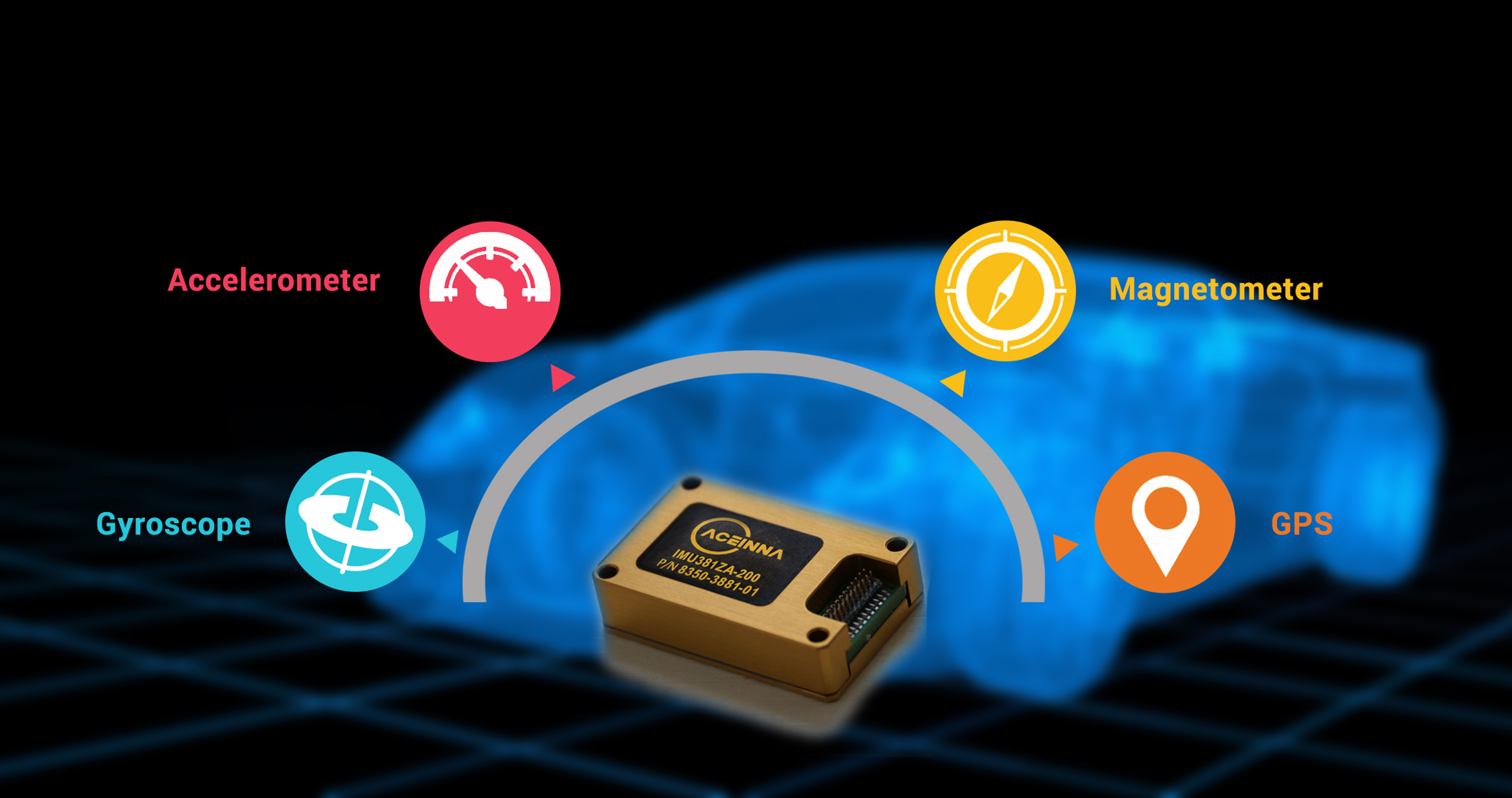
ACEINNA’s 381ZA-200 can replace multiple sensing functions in a single, compact package.
9. Quanergy S3 solid-state LiDARs
Quanergy Systems, Inc. is betting that solid-state LiDARs will help bring down the cost of LiDAR solutions. Thanks to no moving parts, the S3-2 also delivers high reliability while requiring less power. The company combines its S3 solid-state LiDAR sensor with its QORTEX object profiling software to analyze 3D point cloud data to perform safety-critical functions such as object detection, tracking, and classification. The artificial intelligence software enables object detection based on data collected by one or more LiDAR sensors.
10. Vayyar 3D image sensors
Vayyar Imaging’s 3D image sensors provide 360° sensing to know what’s happening inside and outside of vehicles. The company’s system-on-chip (SoC) for mmWave 3D imaging integrates 72 transmitters and 72 receivers, plus an advanced DSP for high resolution and high accuracy. The SoC covers imaging and radar bands from 3 GHz to 81 GHz. The chip doesn’t require an external CPU for complex imaging algorithms. Plus, it can operate in every weather or light condition, which makes it suitable for automotive markets.
For 360° sensing inside and outside of cars, the sensor can detect and monitor presence, location, posture, distances, vital signs, and obstacles. The sensors can detect more than 150K points of interest per second.
Advertisement
Learn more about ams (formerly austriamicrosystems)OmniVision TechnologiesSTMicroelectronicsTDK AmericaTexas InstrumentsVishay Semiconductors





